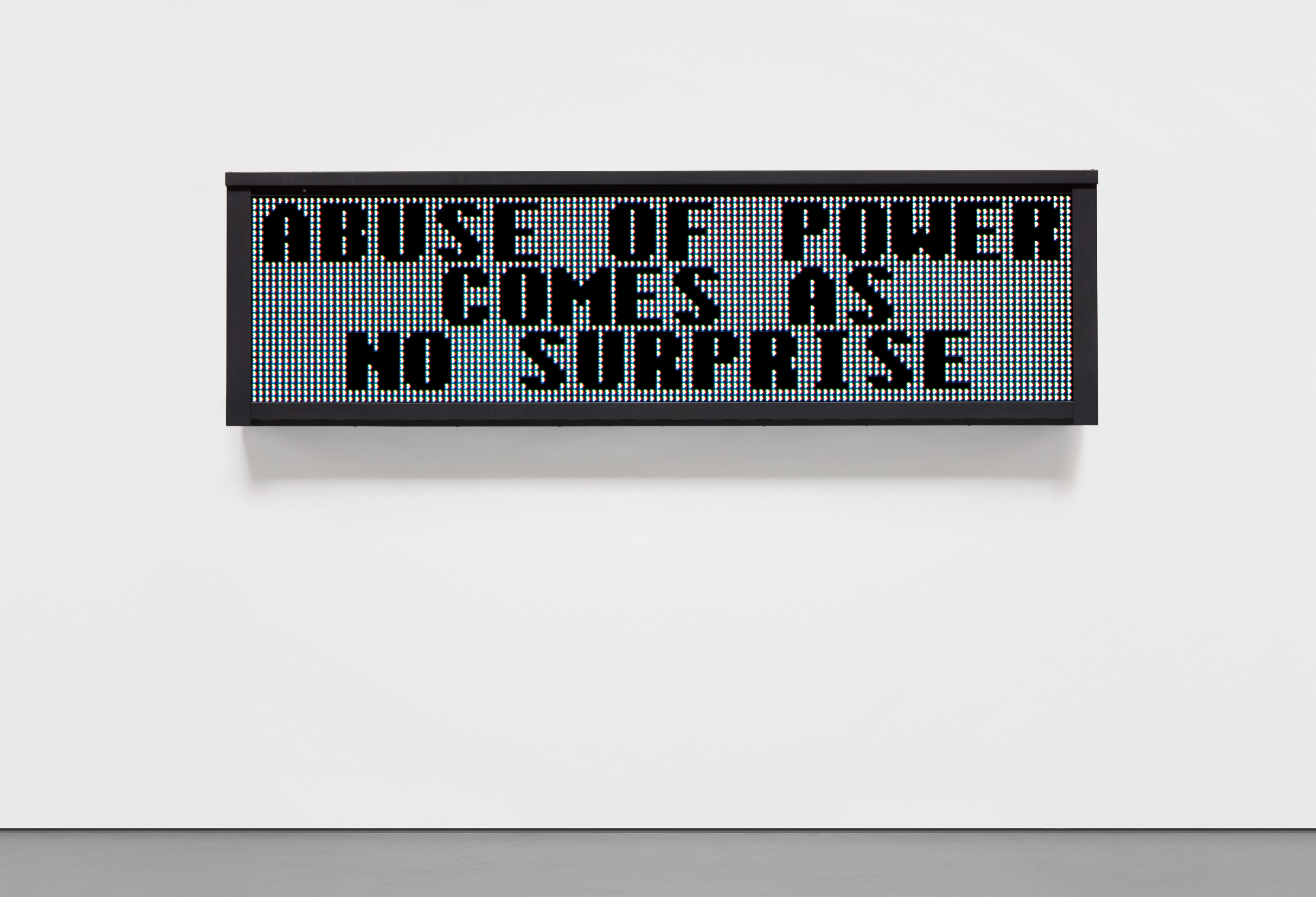
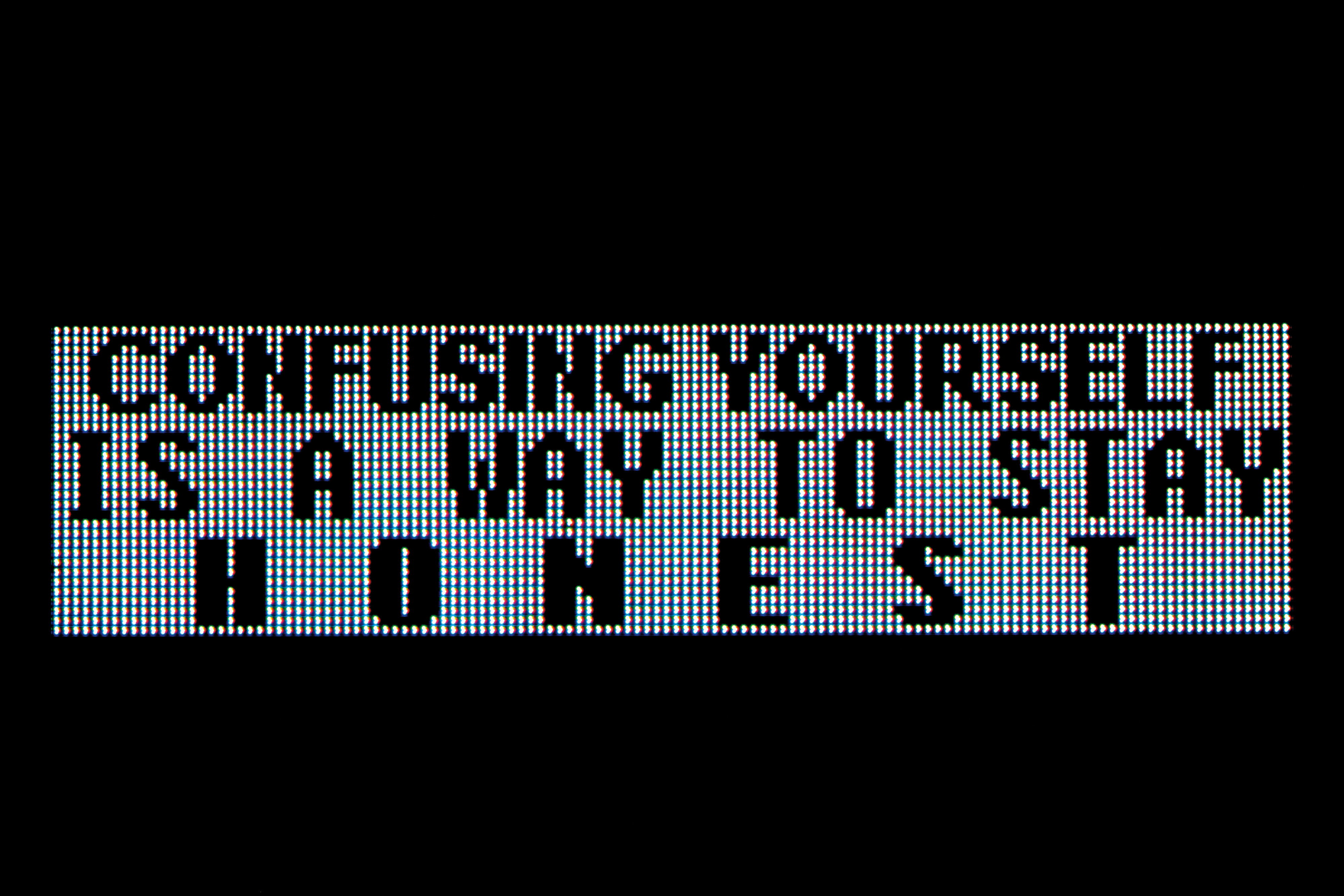
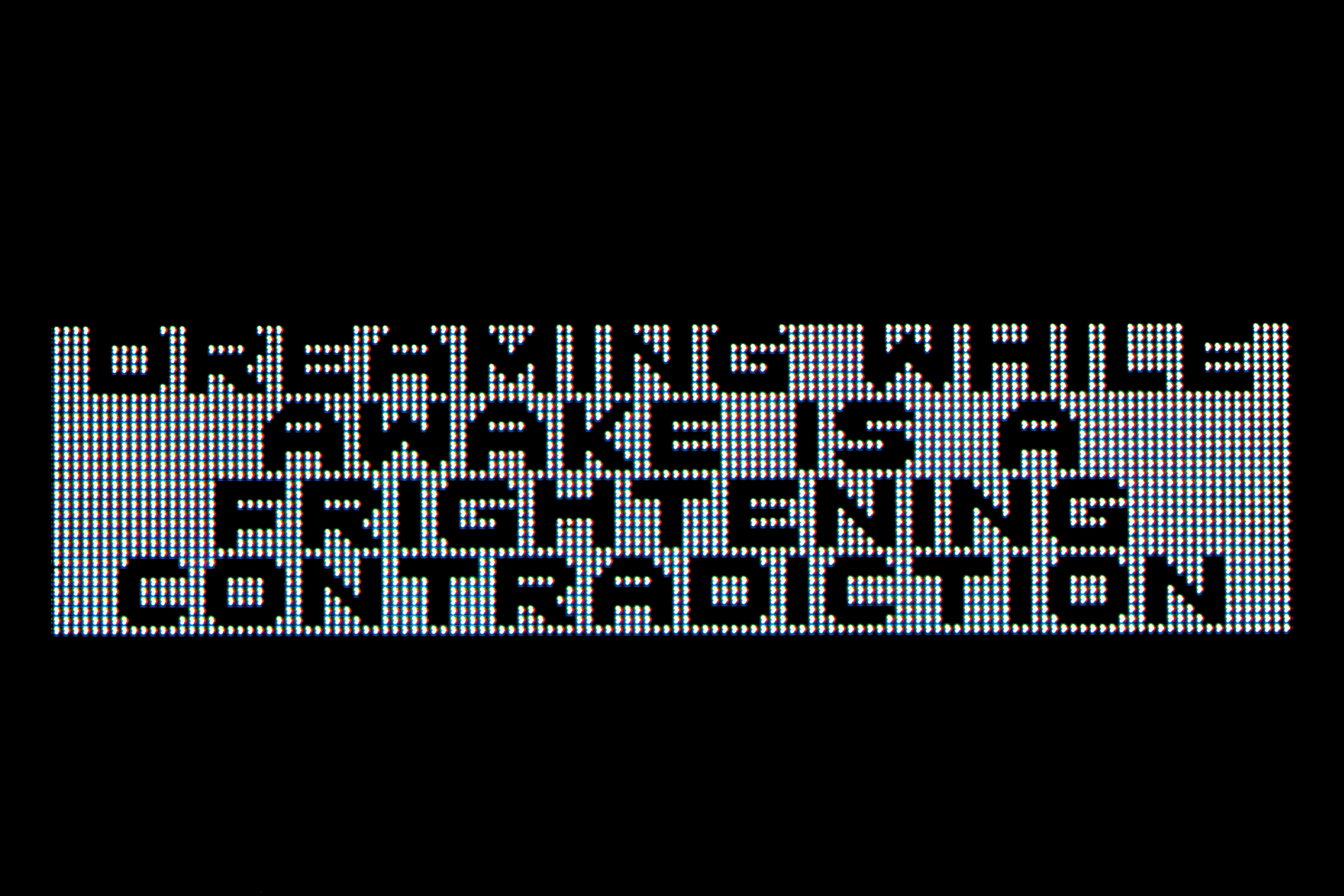
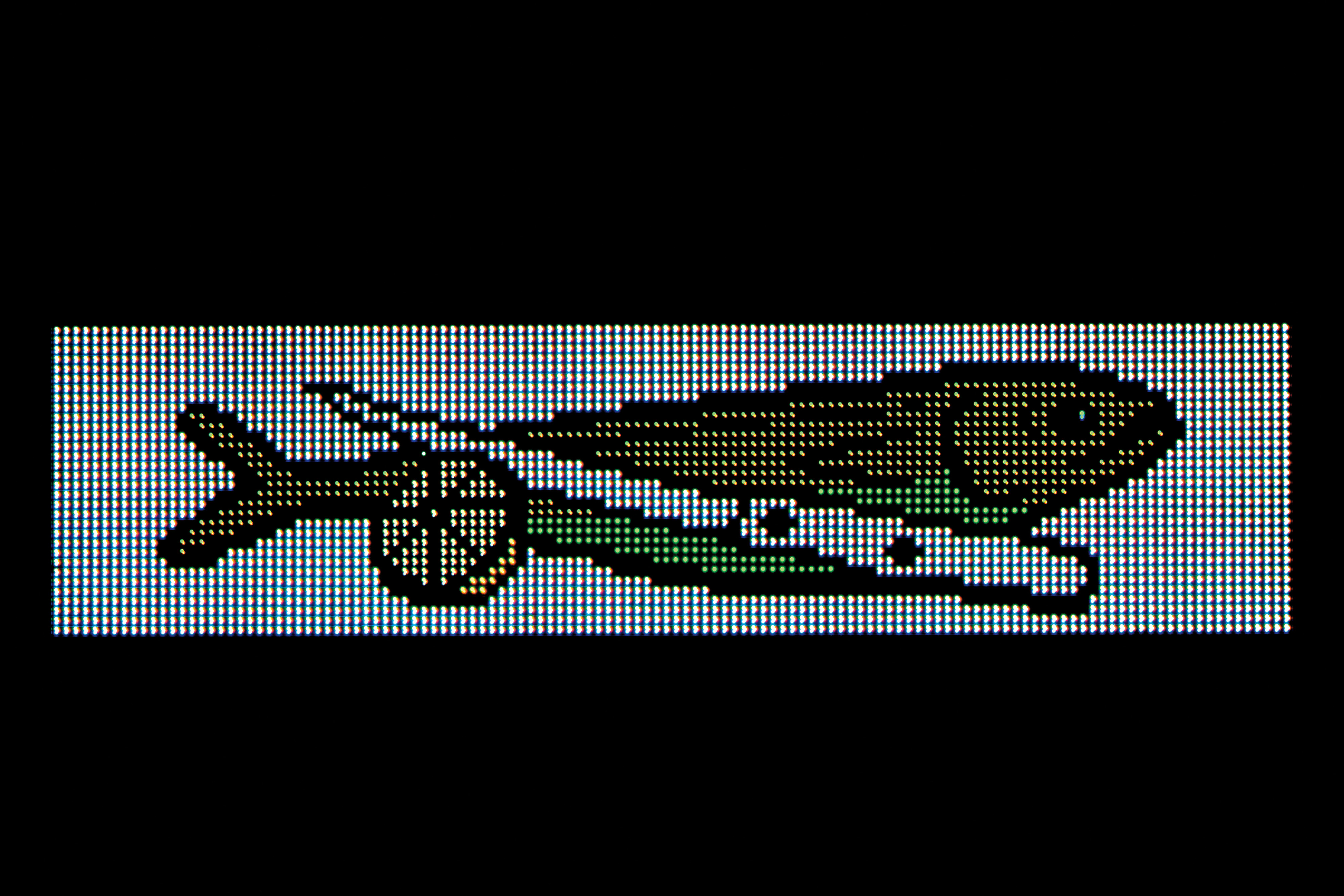

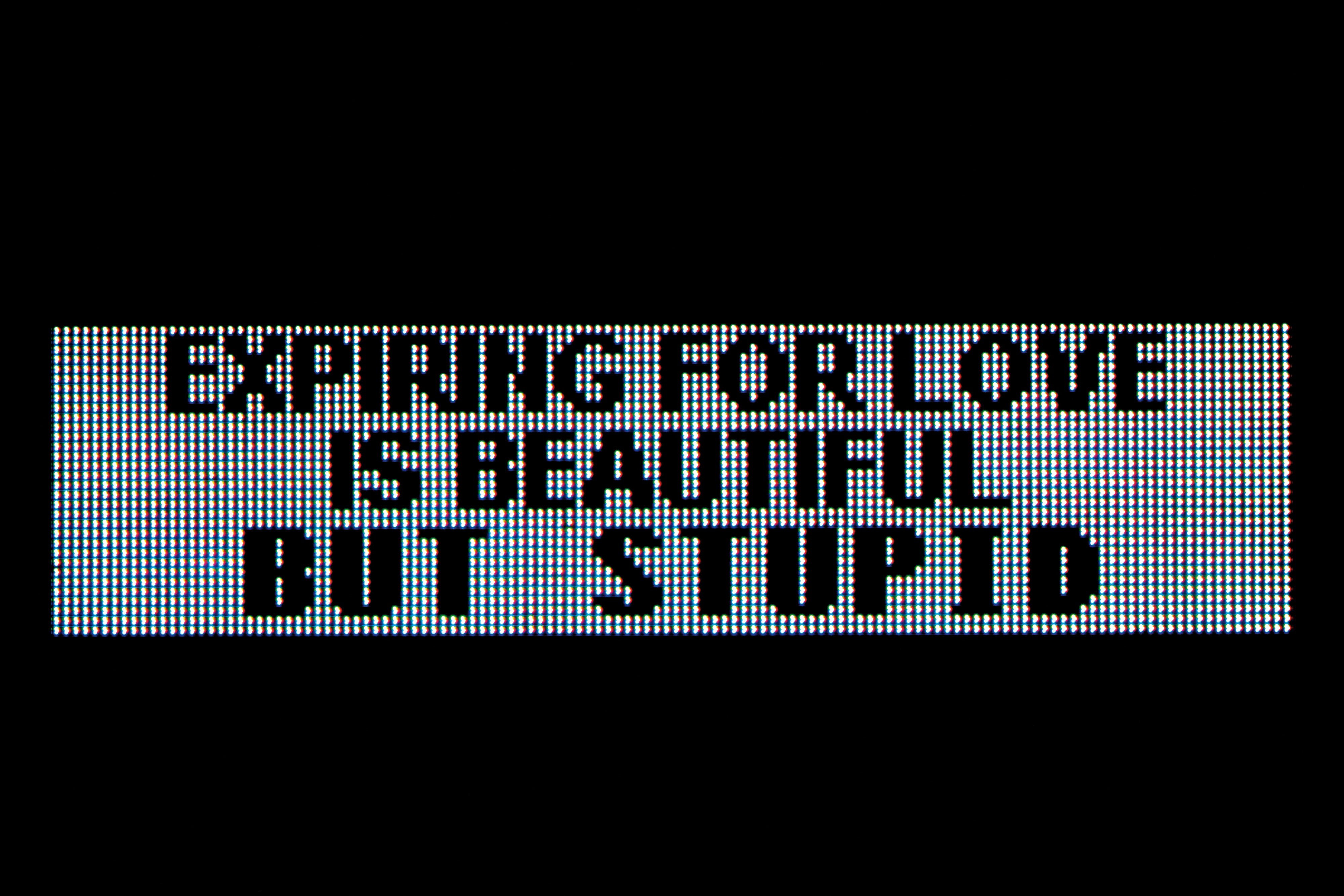

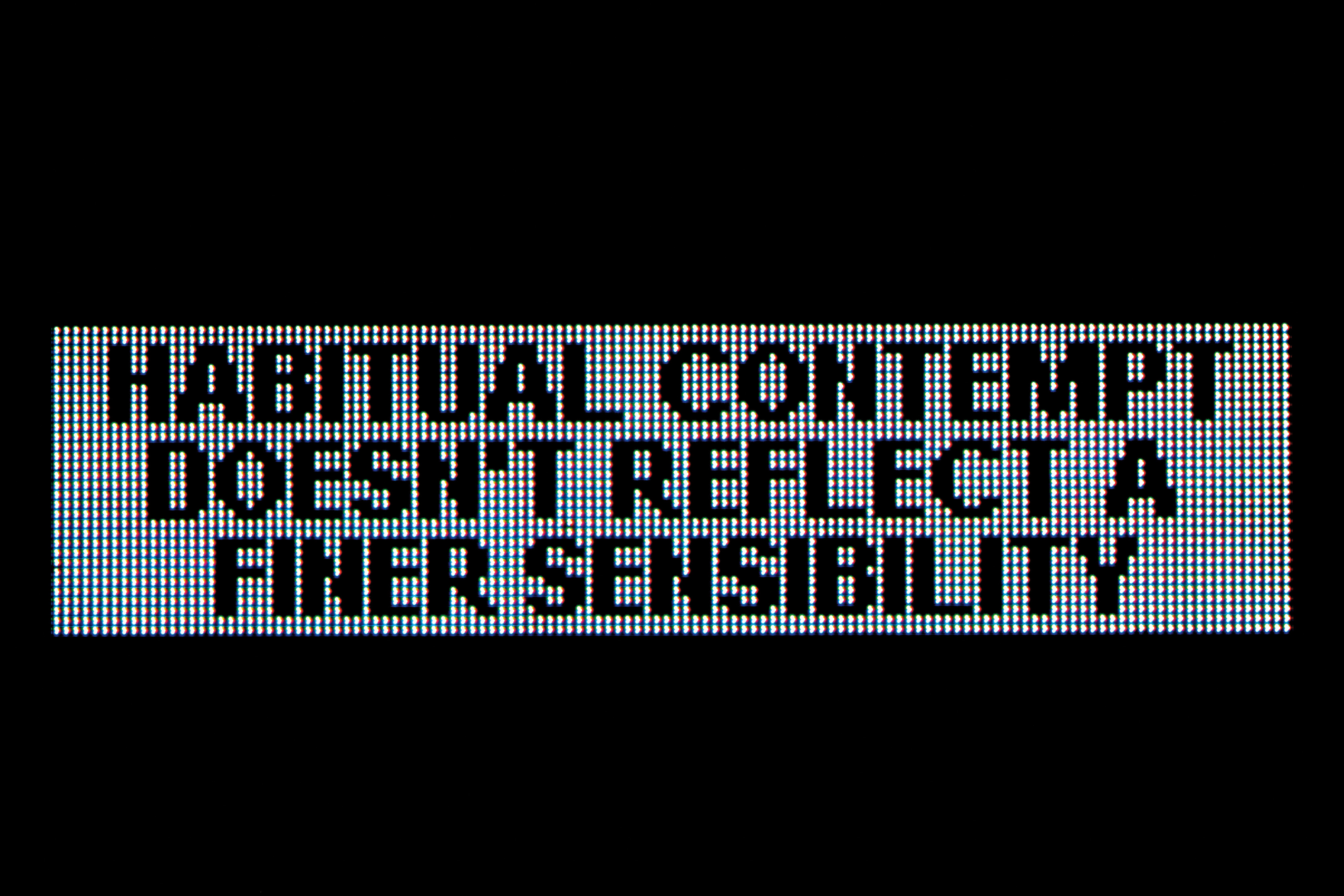
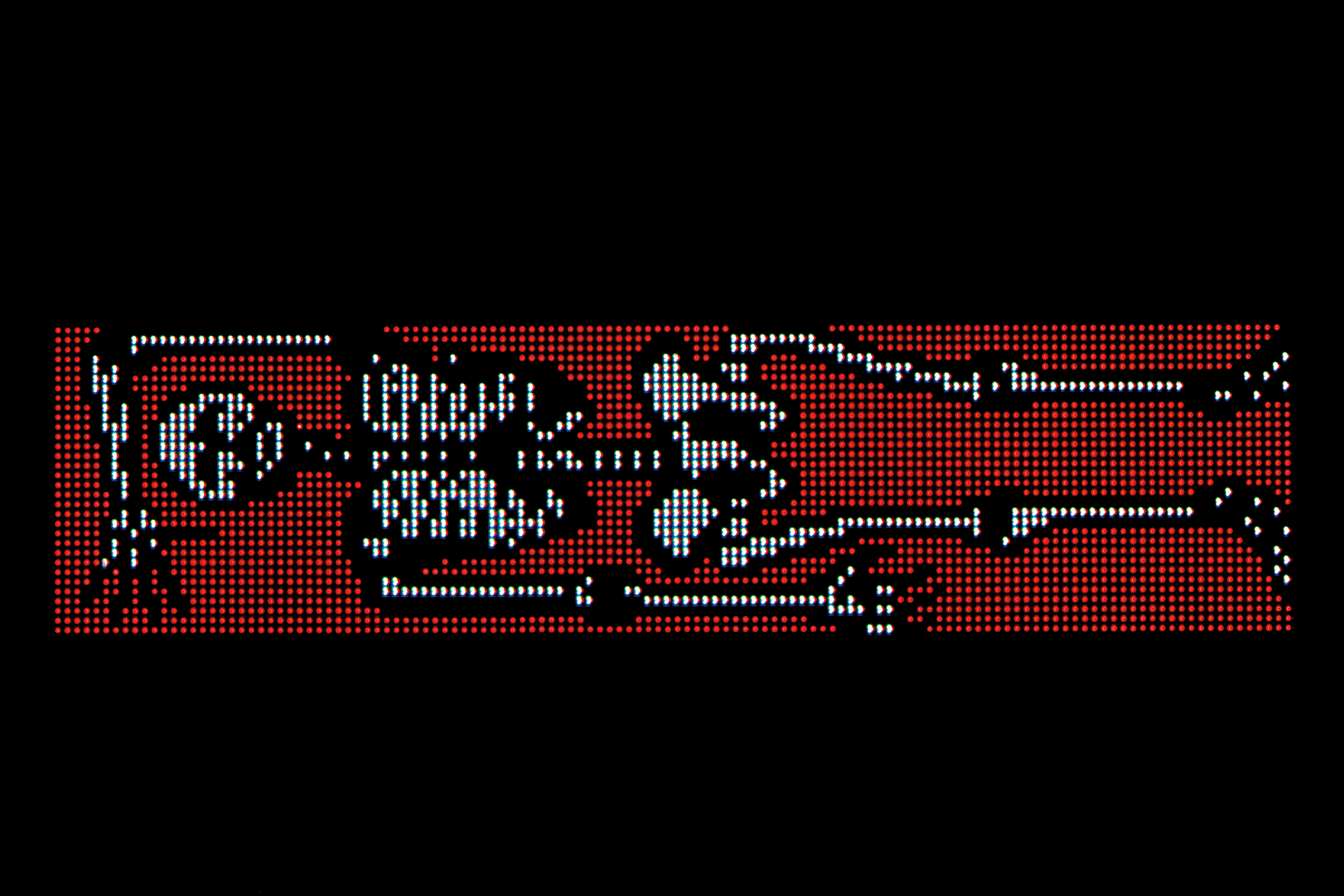
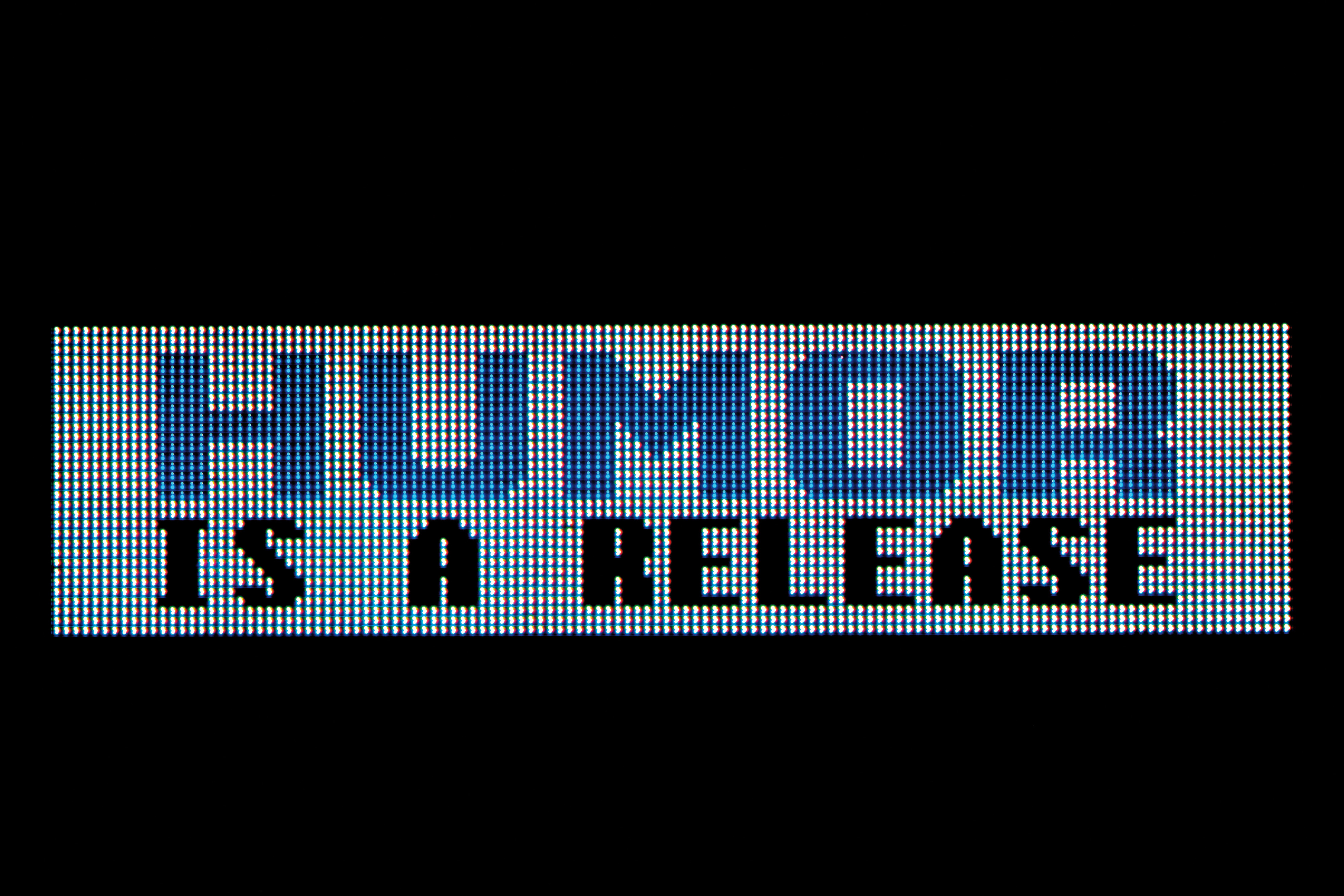
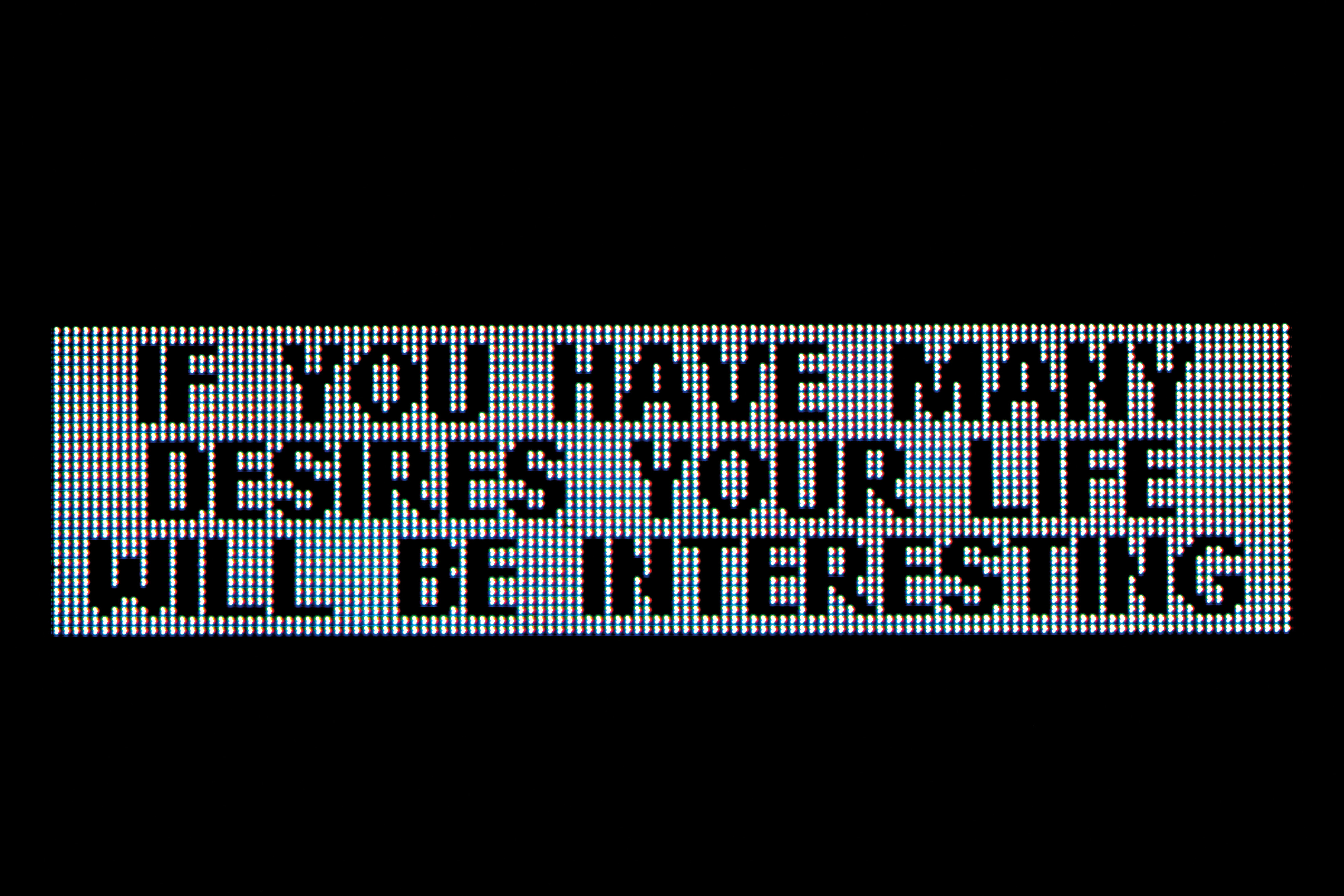

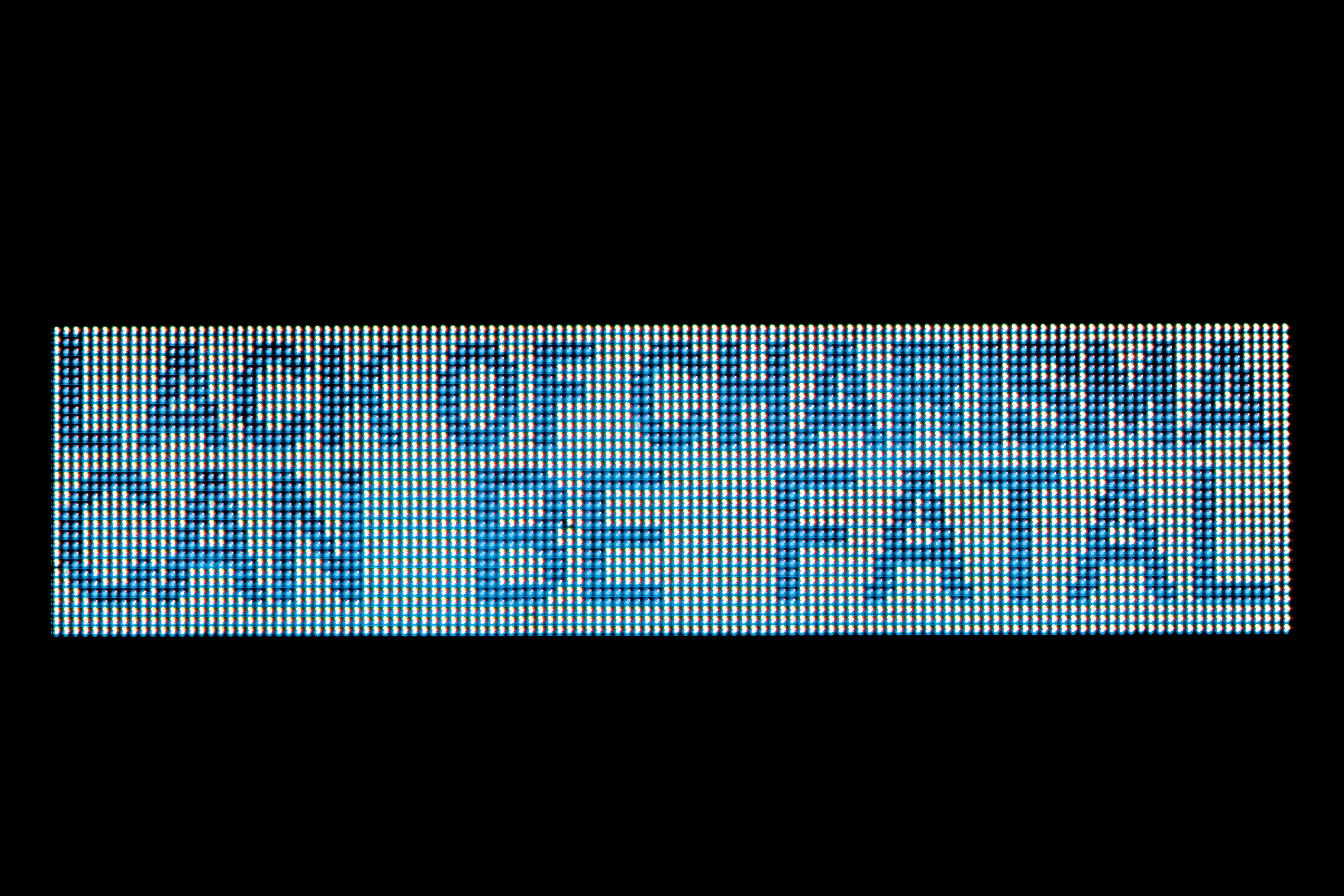
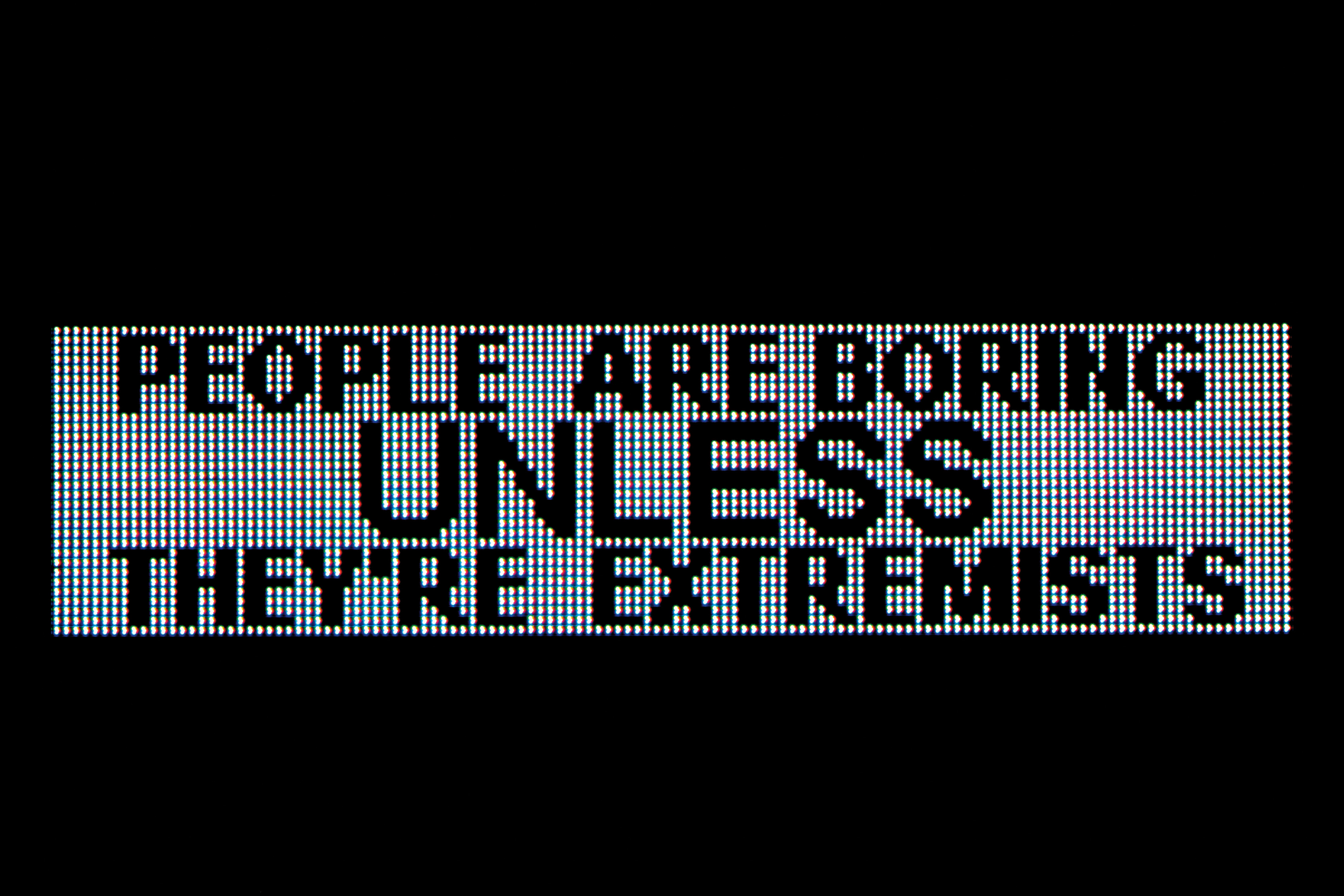
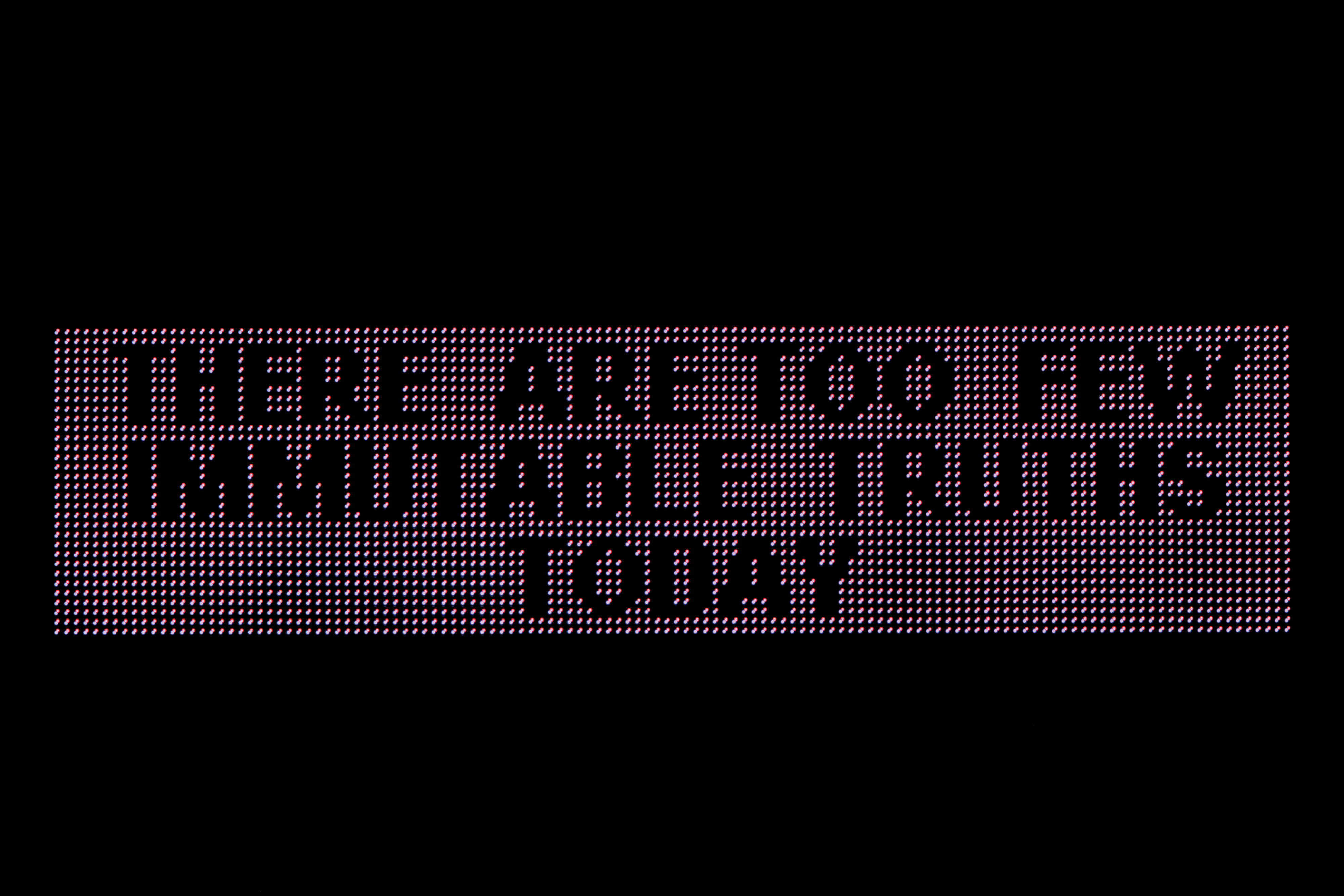
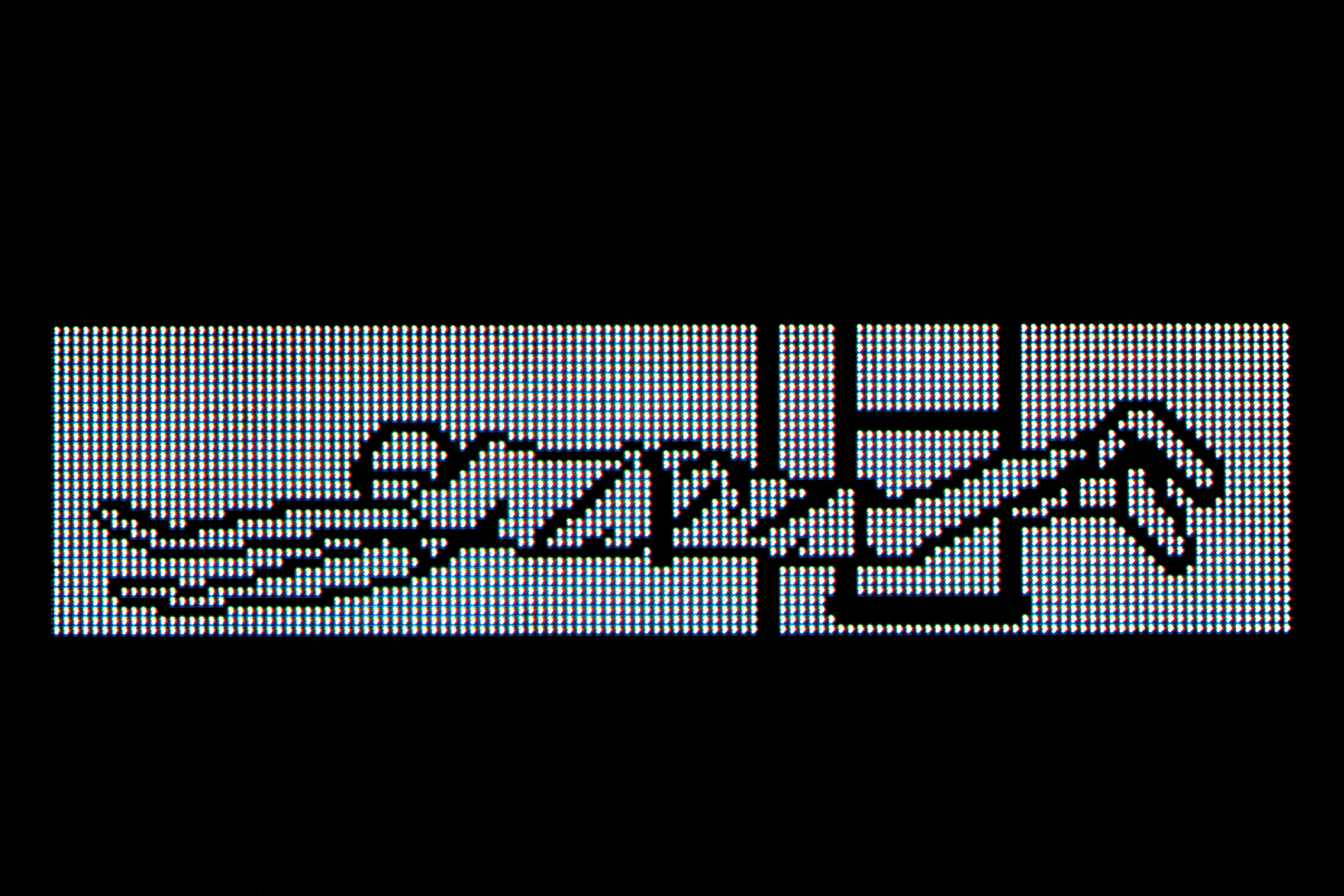
















Property from the Martin Z. Margulies Foundation, Miami
1
Jenny Holzer
Truisms: UNEX sign
signed “Jenny Holzer” on a label affixed to the reverse
horizontal LED sign; red, green, and blue diodes; flat black housing
31 x 106 x 9 in. (78.7 x 269.2 x 22.9 cm.)
duration 8:40
duration 8:40
text: Truisms, 1977–1979
Executed in 1983, this work is number 1 from an edition of 3 plus 1 artist's proof.
Executed in 1983, this work is number 1 from an edition of 3 plus 1 artist's proof.
Full-Cataloguing
“I wanted a lot simultaneously: to leave art outside for the public, to be a painter of mysterious yet ordered works, to be explicit but not didactic, to find the right subjects, to transform spaces, to disorient and transfix people, to offer up beauty, to be funny and never lie.” - Jenny Holzer
Held in the esteemed collection of Martin Z. Margulies for over 30 years, Truisms: UNEX sign, 1983, is an early LED work by Jenny Holzer that powerfully presents the artist’s distinct approach to disrupting and polemicizing language, media, and the sign. A striking reprisal of Holzer’s breakthrough series, Truisms which began in 1977, the work takes the form of a multi-colored electronic signboard that displays a sequence of aphoristic statements, including the most iconic of all Truisms, “ABUSE OF POWER COMES AS NO SURPRISE”. Moving across the screen in a variety of colors, typefaces and graphic effects, this litany of text is interrupted every so often by a handful of disjunctive visual graphics, including stylized depictions of a skeleton, an infant, or a fish that are based on drawings Holzer had made herself. With its rare inclusion of visual imagery, a wholly understudied and largely undocumented aspect in discussions of Holzer’s practice, Truisms: UNEX sign occupies a unique position within the artist’s text-based oeuvre.
While recalling such sound bites of the modern age as advertising slogans or newspaper headlines, Holzer’s Truisms represent the distillation of an erudite reading list the artist studied whilst completing the Whitney Independent Study Program in the late 1970s. Utilizing an accessible, comprehensible and non-judgmental language, Holzer distilled the often conflicting biases and beliefs conveyed in these books of intellectual thought into brief, “authorless” statements. Initially, these several hundred one-liners were printed on anonymous posters that she had wheat-pasted to buildings and walls around Manhattan, as well as stickers, T-Shirts and hats. With Truisms: UNEX sign, Holzer further developed her text-based practice vis-à-vis the rhetoric of modern information systems, embracing the LED sign as her signature formal device following the display of her Truisms on the Spectacolor board in Times Square in New York in 1982. The presentation of the sequence of Truisms and images on an electronic signboard, which was at the forefront of modern technology in the 1980s, deliberately undermined viewers expectations: instead of transmitting ads or public announcements, Holzer’s attention-grabbing statements succinctly put the finger on some of the most fundamental socio-political, economic, and philosophical issues – presenting each with the same authorless voice that veiled any specific connections to the original source material.
The present work represents one of the rare examples where Holzer used images based on her own drawings, evidencing her exploration of a more primal and universal type of sign. Asked by Jeanne Siegel in 1985 about her introduction of images within her Spectacolor Board and other electronic signs, Holzer explained, “I found a sign I liked very much that had graphic capacity and I thought, why not use it? People respond to images. I thought, go with it. I like to draw. I haven’t had a chance for a long time” (Jenny Holzer, quoted in “Jenny Holzer’s Language Games”, Jeanne Siegel, Art Talk, The Early 1980s, Ann Arbor, 1998, p. 296). The specific imagery within Truisms: UNEX sign is based on hand-drawn works conceived by Holzer that she also included in UNEX Sign #1 (Selections from The Survival Series), 1983, examples of which reside in the collections of the Whitney Museum of American Art, New York, and the National Gallery of Canada, Ottawa. Conceived as part of Holzer’s Survival series, 1982-1985, that work explored themes of fear, insecurity, pain and self-protection through statements written by the artist. If the visual imagery served to heighten the more apprehensive undertones of UNEX Sign #1, in the present work it operates on a more ambivalent, albeit similarly primal and universal, level – functioning, just like words, as signs with no evident correlating signifiers.
It was with works such as the present one that Holzer gained widespread critical acclaim for her subversive approach, which just a few years later would lead to the watershed moment when she became the first female artist to represent the United States at the 44th Venice Biennale in 1990. Working alongside such contemporaries as Cindy Sherman and Barbara Kruger, Holzer developed a unique idiom to investigate the mechanics of power as an ideological function of language. In doing so, she fused conceptual art’s emphasis on linguistic structures with the tradition of public intervention that had its roots in the Situationist International. Operating between the late 1950s and early 1970s, this avant-garde movement pioneered new techniques of public engagement in response to what Guy Debord identified as the “domination of a social interaction mediated by images” (Guy Debord, The Society of the Spectacle, Paris, 1967, online). Even three decades later, Truisms: UNEX sign holds us in its unflinching grip. As the hypnotic visual effect of alternating color, rhythm and speed begins to take over content, seducing us into its spell, Holzer vividly reminds us of the dangers of passivity – prompting us to critically reflect upon our own agency within today’s “post-truth” era.
Held in the esteemed collection of Martin Z. Margulies for over 30 years, Truisms: UNEX sign, 1983, is an early LED work by Jenny Holzer that powerfully presents the artist’s distinct approach to disrupting and polemicizing language, media, and the sign. A striking reprisal of Holzer’s breakthrough series, Truisms which began in 1977, the work takes the form of a multi-colored electronic signboard that displays a sequence of aphoristic statements, including the most iconic of all Truisms, “ABUSE OF POWER COMES AS NO SURPRISE”. Moving across the screen in a variety of colors, typefaces and graphic effects, this litany of text is interrupted every so often by a handful of disjunctive visual graphics, including stylized depictions of a skeleton, an infant, or a fish that are based on drawings Holzer had made herself. With its rare inclusion of visual imagery, a wholly understudied and largely undocumented aspect in discussions of Holzer’s practice, Truisms: UNEX sign occupies a unique position within the artist’s text-based oeuvre.
While recalling such sound bites of the modern age as advertising slogans or newspaper headlines, Holzer’s Truisms represent the distillation of an erudite reading list the artist studied whilst completing the Whitney Independent Study Program in the late 1970s. Utilizing an accessible, comprehensible and non-judgmental language, Holzer distilled the often conflicting biases and beliefs conveyed in these books of intellectual thought into brief, “authorless” statements. Initially, these several hundred one-liners were printed on anonymous posters that she had wheat-pasted to buildings and walls around Manhattan, as well as stickers, T-Shirts and hats. With Truisms: UNEX sign, Holzer further developed her text-based practice vis-à-vis the rhetoric of modern information systems, embracing the LED sign as her signature formal device following the display of her Truisms on the Spectacolor board in Times Square in New York in 1982. The presentation of the sequence of Truisms and images on an electronic signboard, which was at the forefront of modern technology in the 1980s, deliberately undermined viewers expectations: instead of transmitting ads or public announcements, Holzer’s attention-grabbing statements succinctly put the finger on some of the most fundamental socio-political, economic, and philosophical issues – presenting each with the same authorless voice that veiled any specific connections to the original source material.
The present work represents one of the rare examples where Holzer used images based on her own drawings, evidencing her exploration of a more primal and universal type of sign. Asked by Jeanne Siegel in 1985 about her introduction of images within her Spectacolor Board and other electronic signs, Holzer explained, “I found a sign I liked very much that had graphic capacity and I thought, why not use it? People respond to images. I thought, go with it. I like to draw. I haven’t had a chance for a long time” (Jenny Holzer, quoted in “Jenny Holzer’s Language Games”, Jeanne Siegel, Art Talk, The Early 1980s, Ann Arbor, 1998, p. 296). The specific imagery within Truisms: UNEX sign is based on hand-drawn works conceived by Holzer that she also included in UNEX Sign #1 (Selections from The Survival Series), 1983, examples of which reside in the collections of the Whitney Museum of American Art, New York, and the National Gallery of Canada, Ottawa. Conceived as part of Holzer’s Survival series, 1982-1985, that work explored themes of fear, insecurity, pain and self-protection through statements written by the artist. If the visual imagery served to heighten the more apprehensive undertones of UNEX Sign #1, in the present work it operates on a more ambivalent, albeit similarly primal and universal, level – functioning, just like words, as signs with no evident correlating signifiers.
It was with works such as the present one that Holzer gained widespread critical acclaim for her subversive approach, which just a few years later would lead to the watershed moment when she became the first female artist to represent the United States at the 44th Venice Biennale in 1990. Working alongside such contemporaries as Cindy Sherman and Barbara Kruger, Holzer developed a unique idiom to investigate the mechanics of power as an ideological function of language. In doing so, she fused conceptual art’s emphasis on linguistic structures with the tradition of public intervention that had its roots in the Situationist International. Operating between the late 1950s and early 1970s, this avant-garde movement pioneered new techniques of public engagement in response to what Guy Debord identified as the “domination of a social interaction mediated by images” (Guy Debord, The Society of the Spectacle, Paris, 1967, online). Even three decades later, Truisms: UNEX sign holds us in its unflinching grip. As the hypnotic visual effect of alternating color, rhythm and speed begins to take over content, seducing us into its spell, Holzer vividly reminds us of the dangers of passivity – prompting us to critically reflect upon our own agency within today’s “post-truth” era.
Jenny Holzer
American | 1950Jenny Holzer is a Conceptual artist best known for her text-based public art projects. Holzer's work speaks of violence, oppression, sexuality, feminism, power, war and death. Throughout the years, Holzer has employed a variety of media, from a T-shirt to a plaque to an LED sign. Starting in the 1970s with the New York City posters, and continuing through her recent light projections on landscape and architecture, she uses her art as a form of communication and commentary. Holzer's art hangs in important collections around the globe including 7 World Trade Center, the Venice Biennale, the Guggenheim Museums in New York and Bilbao and the Whitney Museum of American Art.